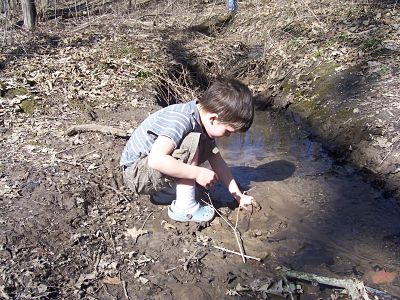Intro To Pre-K and Kindergarten Science
Who says pre-K and kindergartners can’t do science? Sure, they probably aren’t ready to study the kreb’s cycle or to understand quantum physics. However, they are probably the most science minded of all the ages of our students. They are very curious and love to explore and ask questions. As home educating parents, we need to capitalize on that.
Presenting science to young learners need not be fancy or complicated. At this age, children learn by doing. They are looking for answers by exploring and observing. As their teachers, we need to give them opportunities to do this.
Sorting and Classifying
As we observe, we automatically classify information. We look out the window and see trees, grass, sidewalks and bicycles. The trees and grass get classified in our minds as living things, while the sidewalks and bicycles are classified as non-living. Items at a grocery store are sorted and divided into groups – produce, meat, dairy, etc.
Teach your young learners to sort and categorize by first determining the differences between objects. You might want to start by sorting colored blocks. Then, you might move to sorting animals. You could mix farm animals and jungle animals. This would work great in a book or animal science study. Be creative. Sorting and classifying opportunities are all around.
Cause and Effect
Young children are often amazed when they lay a crayon on a slanted surface and it rolls to the floor when they let go. The concept of flat and angled surfaces and their affect on other objects hasn’t caught on yet. What a great opportunity to teach cause and effect! Prop a board on a box and create an angle. Lay various objects at the top and see what happens. Try a pencil, a block, a ball, a stuffed animal. Ask your child what they thing will happen and why. Let them explain the result after you have tried each object.
Look for other cause and effect lessons in your everyday life. Think about why flags wave, what happens when colors mix, what happens when ice cubes are left in a cup and then what happens when that cup is put back into the freezer. Always ask what they think will happen first and then have them try to explain what really happened. This is a great way to get the door of their mind open to teach them real concepts in an age appropriate way.

Exploring
Simple exploration of the world around them is a great way to teach preschoolers about science. When they have a safe place to look, listen, test and ask questions, the world opens up to them. It develops their curiosity, a trait that will give them a lifetime of learning. Take your young scientists on a nature walk or let them bake something in the kitchen with you. Go to the zoo or local botanical garden or farm. Your options are endless!
Most of all, when working with the youngest learners, have fun and be curious, too!
What pre-k and kindergarten science lessons have you used that worked for you?
If you are looking for some more great pre-school science inspiration, check out the 10 Days Of Pre-School Science series at SpellOutLoud.com.
I hold a master’s degree in child development and early education and am working on a post-baccalaureate in biology. I spent 15 years working for a biotechnology company developing IT systems in DNA testing laboratories across the US. I taught K4 in a private school, homeschooled my children, and have taught on the mission field in southern Asia. For 4 years, I served on our state’s FIRST Lego League tournament Board and served as the Judging Director. I own thehomeschoolscientist and also write a regular science column for Homeschooling Today Magazine. You’ll also find my writings on the CTCMath blog. Through this site, I have authored over 50 math and science resources.


